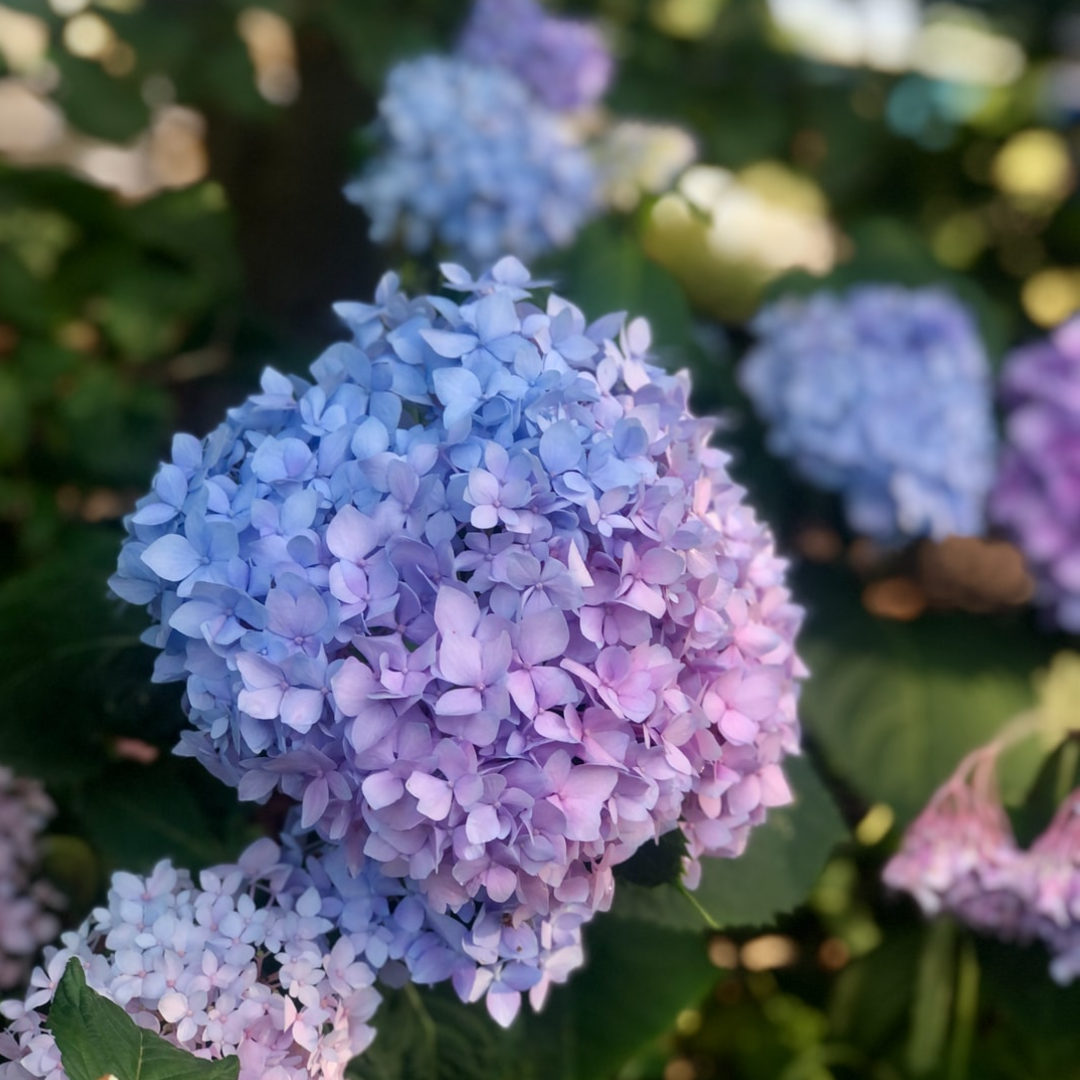Last Updated on August 16, 2022 by Real Men Sow
Hydrangeas (Hydrangea macrophylla), come in many cultivars and colors and they are a sight to see when in bloom. Some hydrangeas bloom in spring, and then stop mid-summer. Others start producing knockout flowers midsummer and last until fall. Some hydrangeas only bloom on new wood while others only bloom on old.
It is a great way to ensure that you have hydrangeas in bloom throughout the summer by choosing a variety of cultivars. Hydrangeas love the sun and warmth of the warmer months but they require the care that will ensure they bloom when you want them.
Choose Complementary Hydrangeas Cultivars
Endless Summer hydrangea (Hydrangea macrophylla Bailmer’ Endless Summer), also called bigleaf hydrangea is one of the rarer varieties that produce blooms on old and new wood but it does not begin flowering until July.
As a companion plant, the Hills-of-Snow hydrangea is a good choice (Hydrangea Arborescens Grandiflora’) because it blooms in zones 3 through 9. The flowers of Hills-of-Snow bloom in zones 3 to 9. There are many combinations possible among the hydrangea cultivars. You will have a lush, steady summer display if you think strategically about which ones you choose.
Prune to Ensure Hydrangeas Blooms
Reduce their growth after the hydrangeas blooming season has ended. This is especially true for varieties that only produce flowers from new wood. Pruning to 12 inches below the ground will remove old wood and encourage new stem growth.
This will ensure that hydrangeas produce flowers. Oakleaf hydrangea, on the other hand, can be pruned only if it is old wood. To keep your tree healthy, remove any dead stems or spent flowers.
Provide Proper Moisture and Sunlight
Hydrangeas require little maintenance. They can thrive in all soil types, as long as it is well-drained and moist. They thrive in full sun to partial shading. However, they can withstand heat. Some varieties require full sun to ensure optimal flowering.
Remember that hydrangeas must be planted in direct sunlight. They also need to have moist soil. Some cultivars can withstand cold, while others freeze easily when temperatures drop. In the spring, you can remove damaged branches.
Hydrangea Watering Steps
- Make sure your soil is well-drained.
- Add organic material to amend sandy soil.
- Watering by hand should be done at the base of your plant.
- Fungal disease can be spread by watering plants directly.
- If you don’t have time to water your plants by hand, drip irrigation is the best option.
- Pay attention to the weather and don’t go too or too low.
- Your leaves will let you know when they require more water.
Limit Feeding
It can be tempting to fertilize your plants when you want to increase your hydrangea flower production. Fertilizing blindly can lead to damage to your plants. It is easy to perform a soil test and it will tell you what nutrients your soil might be lacking. Once you have the results, you can start to create a feeding plan.
Once established, hydrangeas do not require any extra care when it comes time to feed them. You can fertilize your Hydrangea by using manure or compost at the base. This will not only produce great results but also improve your soil’s conditions over time.
To produce the best flowers, all flowering plants require phosphorus. You will want to use a fertilizer specifically designed for flowering trees and shrubs. These fertilizers can be found in slow-release formulas. Hydrangeas are already dormant and should not be fertilized after August. You could endanger your flowers in the following year.

